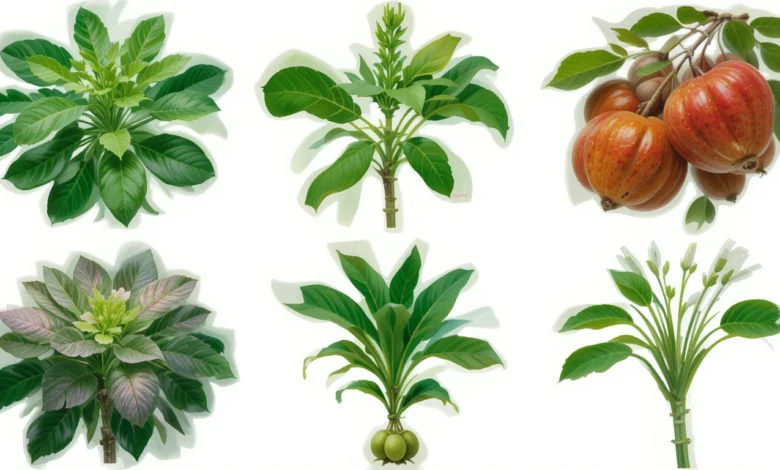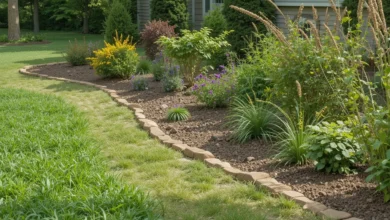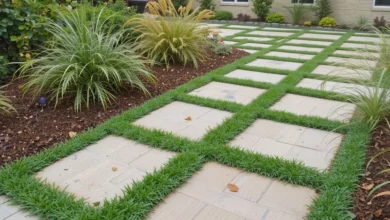10 Plants You Should Never Grow Next to Fruit Trees, According to Gardening Experts

Fruit trees are a great addition to any garden, offering fresh, homegrown produce and beautiful blossoms. But did you know that not all plants get along with fruit trees? Some plants can actually harm the health of your fruit trees, affecting their growth, nutrient intake, and overall yield. This is why it’s important to know which plants to keep away from your fruit trees.
In this article, we’ll explore 10 plants you should never grow next to fruit trees, according to gardening experts. We’ll explain why these plants can be harmful, what to look out for, and how to create the best environment for your fruit trees to thrive. So, whether you’re a seasoned gardener or a beginner, let’s dive in!
Why Planting Near Fruit Trees Matters
Fruit trees need the right conditions to grow healthy and produce delicious fruit. These conditions include:
- Adequate sunlight
- Proper watering
- Enough space for their roots to spread
- Good soil with the right nutrients
Some plants can interfere with these needs, either by competing for resources or by creating conditions that aren’t ideal for fruit trees. When you plant certain species next to fruit trees, they might:
- Compete for water and nutrients
- Attract pests or diseases
- Cast too much shade
- Release chemicals that affect the soil
Understanding these risks is the first step in creating a healthy and productive fruit tree garden. So, let’s look at the plants that you should avoid planting near your fruit trees.
10 Plants You Should Never Grow Next to Fruit Trees
1. Tomatoes
Tomatoes are a popular garden plant, but they don’t play well with fruit trees. Tomatoes are in the same family as peppers, potatoes, and eggplants—the nightshade family—and they are susceptible to many of the same pests and diseases. If you plant tomatoes near fruit trees, you risk spreading these issues to your trees.
- Why Avoid: Tomatoes can attract pests like aphids and hornworms, which can also harm your fruit trees. Additionally, tomatoes need a lot of water and nutrients, which could interfere with the needs of your fruit tree.
- Tip: Plant tomatoes away from your fruit trees in a separate area with good airflow to reduce the risk of pests and disease.
2. Potatoes
Potatoes, like tomatoes, are part of the nightshade family and share similar issues when planted near fruit trees. The roots of potatoes spread out, and they can compete with fruit trees for nutrients and water. Additionally, potatoes can harbor soil-borne diseases like the blight, which can spread to nearby plants, including fruit trees.
- Why Avoid: Potatoes can reduce the amount of nutrients available to your fruit trees and can increase the likelihood of disease transfer.
- Tip: Grow potatoes in raised beds or containers far away from your fruit trees to keep them healthy.
3. Carrots
Carrots may not seem like a threat to fruit trees, but they can actually compete for nutrients. Carrots have long taproots, which can take nutrients from deeper layers of the soil, while fruit trees rely on the nutrients in the top layers of soil. Additionally, carrots don’t need as much water as fruit trees, which can leave your tree roots dehydrated.
- Why Avoid: Carrots and fruit trees may struggle to coexist because they have different water and nutrient needs, leading to unhealthy growth for both.
- Tip: Keep carrots in a dedicated vegetable patch separate from your fruit trees.
Read More: How to Repot a Jade Plant – Step-by-Step Guide for Healthy Growth
4. Garlic and Onions
Garlic and onions are commonly grown in gardens, but they shouldn’t be planted near fruit trees. These plants produce sulfur compounds that can stunt the growth of fruit trees. They can also inhibit the development of other plants by altering the soil chemistry. Garlic and onions also attract certain pests that may damage fruit trees.
- Why Avoid: The sulfur compounds released by garlic and onions can interfere with the growth and health of your fruit trees.
- Tip: Keep garlic and onions in a separate area away from your fruit trees to avoid any negative impact.
5. Mint
Mint is a hardy and fast-growing plant that many gardeners love for its fresh aroma. However, mint is invasive and spreads rapidly, which can lead to it overtaking the area around your fruit trees. It also competes with fruit trees for water and nutrients.
- Why Avoid: Mint can crowd out your fruit tree roots and stunt their growth by stealing the water and nutrients they need.
- Tip: Grow mint in containers to control its growth and prevent it from spreading to your fruit tree area.
6. Fennel
Fennel is a great herb for cooking, but it’s not the best companion for fruit trees. Fennel produces chemicals that can inhibit the growth of other plants, including fruit trees. These chemicals are known as allelopathic compounds, which can affect the soil and disrupt the root systems of nearby plants.
- Why Avoid: Fennel can prevent other plants from thriving, including your fruit trees, by affecting the soil’s health.
- Tip: Plant fennel in a separate section of your garden, far from your fruit trees, to avoid interference.
7. Sunflowers
Sunflowers are bright and cheerful, but they can be a problem when planted near fruit trees. Sunflowers have deep, aggressive root systems that can compete with the roots of your fruit trees for nutrients and water. They can also grow tall and cast a lot of shade on your trees, reducing the sunlight they need to thrive.
- Why Avoid: The deep roots of sunflowers can steal resources from your fruit trees, and the shade they create can limit the growth of your trees.
- Tip: Plant sunflowers in a separate area of the garden, away from your fruit trees, so they don’t compete for space and resources.
8. Cucumbers
Cucumbers are another popular garden plant that can cause problems when planted near fruit trees. They are heavy feeders and require a lot of water, which can lead to competition with your fruit trees. Additionally, cucumbers spread quickly, and their vines can interfere with the fruit tree’s growth and development.
- Why Avoid: Cucumbers can take up too much space and compete with your fruit trees for water and nutrients.
- Tip: Plant cucumbers in a raised bed or container to keep them away from your fruit trees.
9. Rhubarb
Rhubarb is a delicious plant that grows in many gardens, but it should not be planted near fruit trees. Rhubarb has deep roots that can compete with the shallow roots of fruit trees. Additionally, rhubarb requires a lot of moisture, which could dry out the soil around your tree and harm its roots.
- Why Avoid: Rhubarb can steal nutrients and water from fruit trees, affecting their growth and overall health.
- Tip: Keep rhubarb in a separate area of your garden where it won’t compete with your fruit trees.
10. Azaleas
While azaleas are beautiful flowering shrubs, they are not a good companion for fruit trees. Azaleas prefer acidic soil, whereas many fruit trees grow better in slightly alkaline or neutral soil. The soil conditions that favor azaleas may not be ideal for fruit trees, and planting them together can harm the soil’s pH balance.
- Why Avoid: Azaleas can alter the soil’s pH, which can negatively affect the health of your fruit trees.
- Tip: Plant azaleas in a separate area of your garden with similar soil needs, away from your fruit trees.
Conclusion
Choosing the right plants for your garden is essential for ensuring the health and productivity of your fruit trees. By avoiding certain plants, like tomatoes, potatoes, garlic, fennel, and others, you can create an environment where your fruit trees can thrive. Understanding the importance of plant compatibility helps to create a healthier and more productive garden.
Always keep in mind the growth needs, water, and nutrient requirements of your fruit trees when planting other crops nearby. With careful planning, you can create a thriving garden that produces delicious fruit while keeping your plants healthy and happy.




